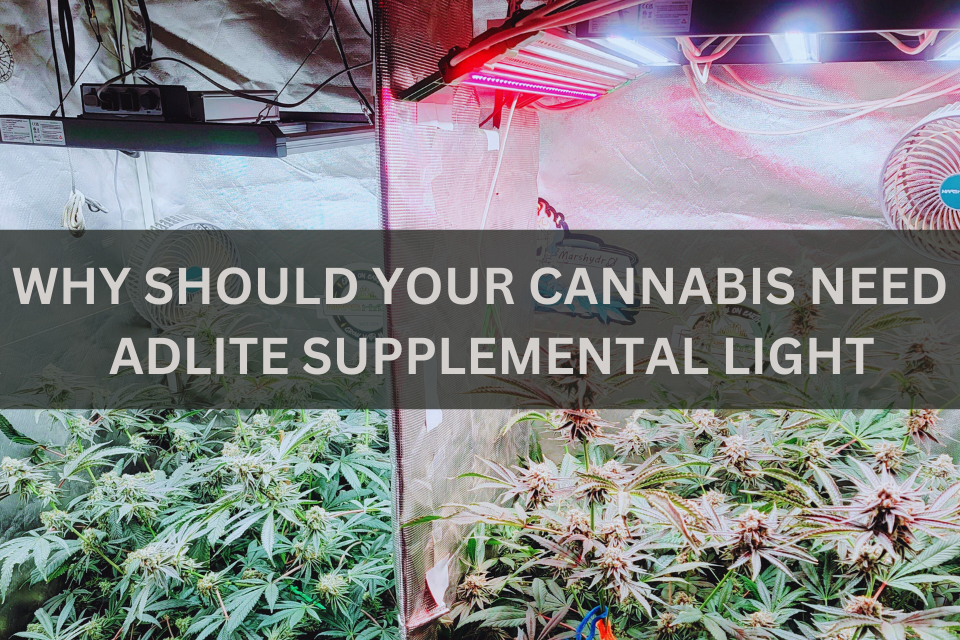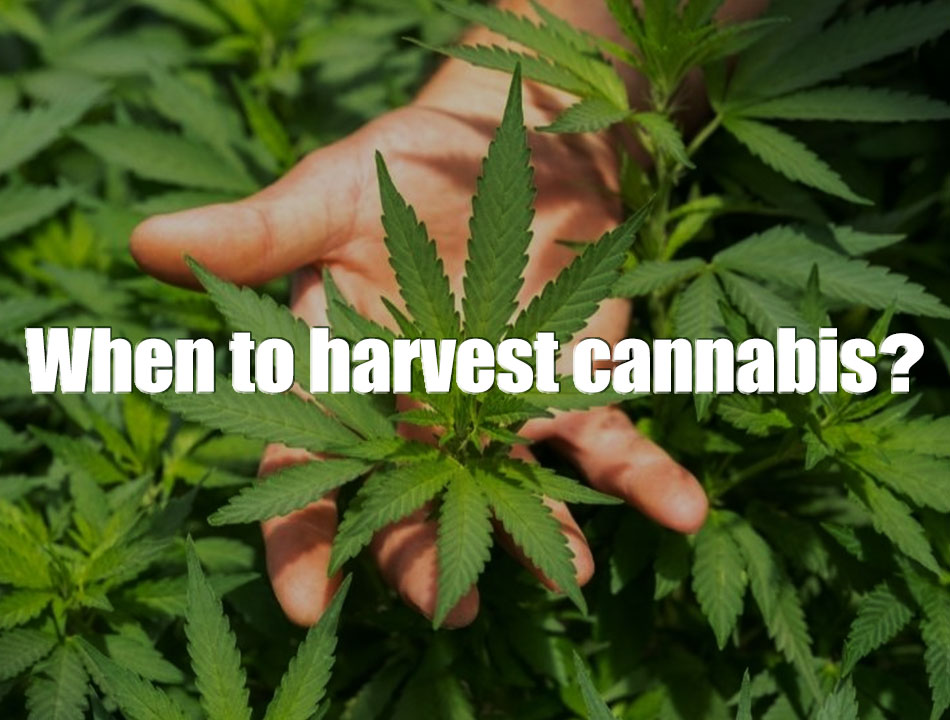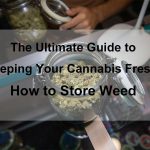
The Ultimate Guide to Keeping Your Cannabis Fresh: How to Store Weed
June 14, 2024
Why Should Your Plants Need ADlite Supplemental Lights
August 26, 2024Causes and Solutions of Cannabis Leaves Curling Up
There are so many accidents that can happen when you grow your cannabis, and leaf curling, often called ‘the claw’ or ‘clawing’, is one of them. The leaves are no longer stretched but curled up or down at the edges.
Watch out, this is not a good sign. The cannabis leaves curling up means your plant is in trouble. In the following article, we will explore the most common reasons why your cannabis leaves curl up and offer solutions to help you heal your cannabis. Let’s check out what’s bothering your plant.
What Causes Cannabis leaves to curl up?
Cannabis leaves curling up could be caused by one thing or a combination of things. Identifying the causes is the key to solving the problem. The following are the most common causes.
Incorrect Lighting
Light is important to all plants, but too much light can burn your cannabis. Light stress occurs when the light intensity is too strong or the lamp is too close to the plant. The leaves will curl up to protect themselves and will turn yellow when the water in the leaves is dried out.
Insufficient light can also negatively affect plant health. When a plant doesn’t receive enough light, its leaves may become thin and weak as they stretch upward or outward in an attempt to capture more light. This abnormal growth pattern can compromise the plant’s overall vitality, leading to long-term health issues.
Improper Temperature and Humidity
Growing cannabis requires careful management of temperature and humidity levels. Unsuitable temperatures can be detrimental and may even kill your plants. Cannabis can tolerate temperatures up to 86°F (30°C), but temperatures should not drop below 55°F (12°C). Extreme temperatures, whether too high or too low, can lead to your cannabis plant leaves curling up.
Humidity is a crucial factor in the cannabis growing process. Cannabis thrives within a specific humidity range of 40% to 60%, depending on its growth stage. Inadequate moisture in the environment can cause the leaves to curl downward and become brittle, indicating that the plant is struggling to maintain its health.
Too High/Low VPD
Vapor Pressure Deficit (VPD) is the difference between the amount of moisture present in the air and the maximum amount the air can hold when fully saturated. It is a crucial factor in plant growth, as it directly influences the rate of transpiration, nutrient uptake, and overall plant health.
When VPD is in the proper range, your cannabis plants can breathe easily and absorb nutrients effectively. However, the wrong VPD can be a plant killer. Too high a VPD causes water to transpire too quickly, causing leaves to curl up due to dehydration. Too low VPD makes the air too humid, causing leaves to breathe poorly, which can lead to insect pests, fungus, and leaf curling.
Overwatering and Underwatering
Cannabis leaves curling up on edges can be a sign of both overwatering and underwatering. While water is essential for transporting nutrients, supporting photosynthesis, and maintaining cell structure, improper watering can create a host of problems.
Overwatering can cause plant roots to become deprived of oxygen. The air spaces within the soil, which normally provide essential oxygen to the roots, become filled with water. This oxygen deprivation can significantly impair root function, resulting in reduced nutrient uptake and slowed plant growth. One of the first signs is the curling of leaves.
Conversely, underwatering leads to dehydration, which also has detrimental effects on the plant. When a plant is underwatered, its leaves may wilt, droop, and curl, often turning brown at the edges as the plant tries to conserve water.
Nutrient Deficiency
Cannabis requires many types of nutrients to grow, such as nitrogen(N), potassium (K), magnesium(Mg), calcium(Ca), sulfur (S), iron (Fe), and so on. Nutrient Deficiency also contributes to leaf curl.
Nitrogen Deficiency: It can cause the cannabis to turn from green to yellow. Older leaves may curl downwards at tips as they begin to die.
Potassium Deficiency: If the leaves are curling up and showing signs of yellowing or browning on the edges, it might be due to a lack of potassium.
Magnesium Deficiency: Curling leaves with yellowing between the veins could indicate a magnesium deficiency.
Nutrient Excesses
Nutrients are essential for healthy cannabis growth, but excessive amounts can lead to various issues. For instance, an excess of nitrogen can result in nitrogen toxicity, causing the leaves to appear dark green and curl into claw-like shapes. This condition can hinder the plant’s development and overall health, making it crucial to maintain balanced nutrient levels.
Pest Infestations
Several types of pests can cause significant damage to cannabis plants, with mites, aphids, thrips, and fungus gnats being among the most common culprits. These pests feed on the plant’s leaves, often causing visible harm, and then lay their eggs in or on the leaves, leading to further infestation.
Plants infested by these pests exhibit a range of symptoms, depending on the type and severity of the infestation. Common signs include curled leaves, discolored spots, and other abnormalities in leaf appearance.
Incorrect pH Level
The pH level is a critical factor in the growth and development of plants, particularly for cannabis. Maintaining the correct pH balance is essential to ensure that the plant can properly absorb nutrients from the soil or growing medium.
If the pH level is too high, it can lead to nutrient lockout, where essential nutrients become inaccessible to the plant. This often results in large areas of yellow spots on the leaves, indicating a deficiency. Conversely, a low pH level can cause similar nutrient uptake issues, leading to yellow or brown spots on the leaves, with the edges curling up as the plant struggles to absorb what it needs.
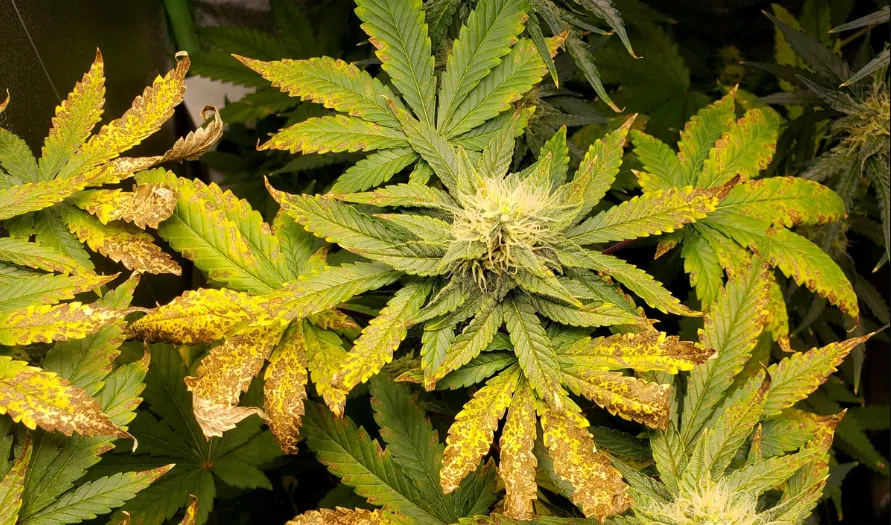
How to Solve Cannabis Leaves Curling Up?
As previously mentioned, several factors can cause cannabis leaves to curl up. Identifying the correct cause is crucial for applying the appropriate solution and effectively resolving the issue. In the following sections, we will provide specific solutions for each of the causes discussed earlier. Follow these guidelines carefully to restore your cannabis plants to optimal health.
Correct Lighting
If your cannabis is experiencing light stress, the issue may stem from the grow lights. The two most common types of grow lights on the market are HPS bulbs and LED grow lights. When cannabis leaves curl up, it often indicates that the light intensity is too strong and is harming your plant.
To address this, consider either replacing your grow light or adjusting its brightness. LED grow lights are generally a better choice compared to HPS bulbs because they are gentler on plants and often come with dimmable settings, allowing you to fine-tune the light intensity according to your plant’s needs.
Light stress can also occur if the grow lights are positioned too close to the plants. To prevent this, maintain a proper distance of approximately 12 to 30 inches between the grow lights and your cannabis plants. Adjusting this distance based on the type of light and the stage of growth can help minimize stress and promote healthy plant development.
Proper Temperature and Humidity
Please ensure that the temperature remains between 68-78°F (20-25°C). If the temperature is above or below this range, immediate action is required. If the temperature is too high, you can use a clip fan or air conditioner to cool it down, and if the temperature is too low, you can also adjust it with an air conditioner or heating pad.
The humidity level between 40-60% is the best. If the humidity is lower than that, you can increase the humidity with a professional humidifier. Mars Hydro Humidifier is easy to control with a touch screen and remote control, customized humidity with four mist levels. If you want a more frugal approach, you can fill a container with water and place it inside the grow tent.
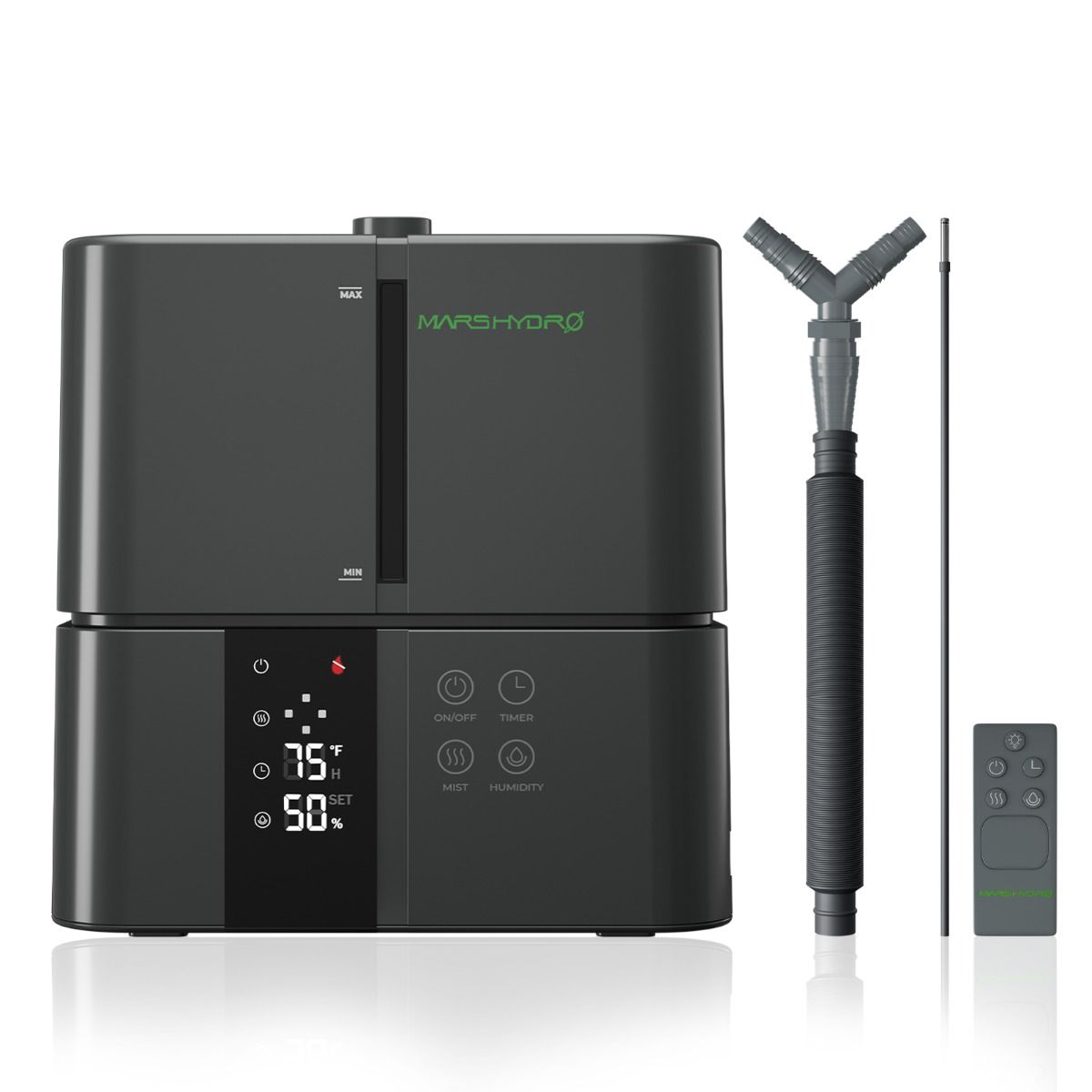
Suitable VPD
The optimal VPD (Vapor Pressure Deficit) for cannabis growth depends on the plant’s growth stage. Generally, the ideal VPD range is as follows:
Seedling Stage: A suitable VPD range is 0.4-0.8 kPa during the seedling stage. A lower VPD helps maintain humidity, reduces water evaporation from the seedlings, and promotes root development.
Vegetative Stage: In the vegetative stage, the ideal VPD range is 0.8-1.2 kPa. This stage requires a moderate VPD to support healthy leaf growth and strong stem development.
Flowering Stage: During the flowering stage, the VPD should be slightly higher, with an ideal range of 1.0-1.5 kPa. A higher VPD reduces the risk of mold and other diseases while promoting the formation and maturation of flowers.
Appropriate Watering and Good Drainage
If you suspect your cannabis plants are suffering from overwatering or underwatering, there’s a simple method to help identify the issue. Stick your finger about 1 inch deep into the soil. If you feel damp, then stop watering. If you feel dry, then it’s time to water.
For beginners, a soil moisture meter can be a helpful tool to monitor moisture levels more accurately.
Additionally, good drainage is vital for maintaining healthy roots and preventing water-related issues. It’s recommended to use a container with good air permeability, such as fabric pots, or to place a layer of gravel at the bottom of the container to improve drainage and airflow.
Nutrition Management
Nutrient levels must be controlled. Under- or over-fertilization can affect yields.
If your cannabis shows signs of nutrient deficiencies, then use a targeted fertilizer to address the specific nutrient that is lacking. This approach helps restore the balance of essential elements, promoting healthier growth and better yields.
If your cannabis has been overfed, then you can correct the issue by flushing the roots. This process involves thoroughly watering the plant with pH-balanced water to remove the excess nutrients from the soil.
Elimination of Pests
When growing cannabis indoors, effective pest control is essential for maintaining the health and vitality of your plants. Here are some common methods for controlling and eliminating pests:
Sticky Traps: Hanging sticky traps in the growing area can effectively capture flying insects like whiteflies and aphids.
Organic Insecticides: Products like Bacillus thuringiensis, insecticidal soap, and neem oil can effectively combat pests.
Chemical Insecticides: If the pest problem is severe, you might consider using chemical insecticides. Ensure you choose products that are safe for cannabis and strictly follow the usage instructions to avoid phytotoxicity.
Regular Plant Inspections: Inspect your plants weekly, checking the leaves, stems, and soil to detect and address pests early, preventing large-scale outbreaks.
Ideal pH Range
When growing cannabis in soil, the ideal pH range is between 6.0 and 7.0. This range allows the plant to absorb nutrients efficiently while minimizing the risk of nutrient deficiencies.
For hydroponics or soilless cultivation, where the growing environment is different, the pH should be maintained between 5.5 and 6.5. Keeping the pH within these ranges ensures optimal growth and helps prevent issues related to nutrient imbalances.
Conclusion
This blog outlines the most common reasons why are your cannabis leaves curling up and offers solutions to address each issue. If you’re still experiencing problems after trying these fixes, feel free to leave a comment below. Remember, growing cannabis is a challenging endeavor that requires careful attention to detail. Identifying and resolving issues promptly is key to maintaining healthy plants.


